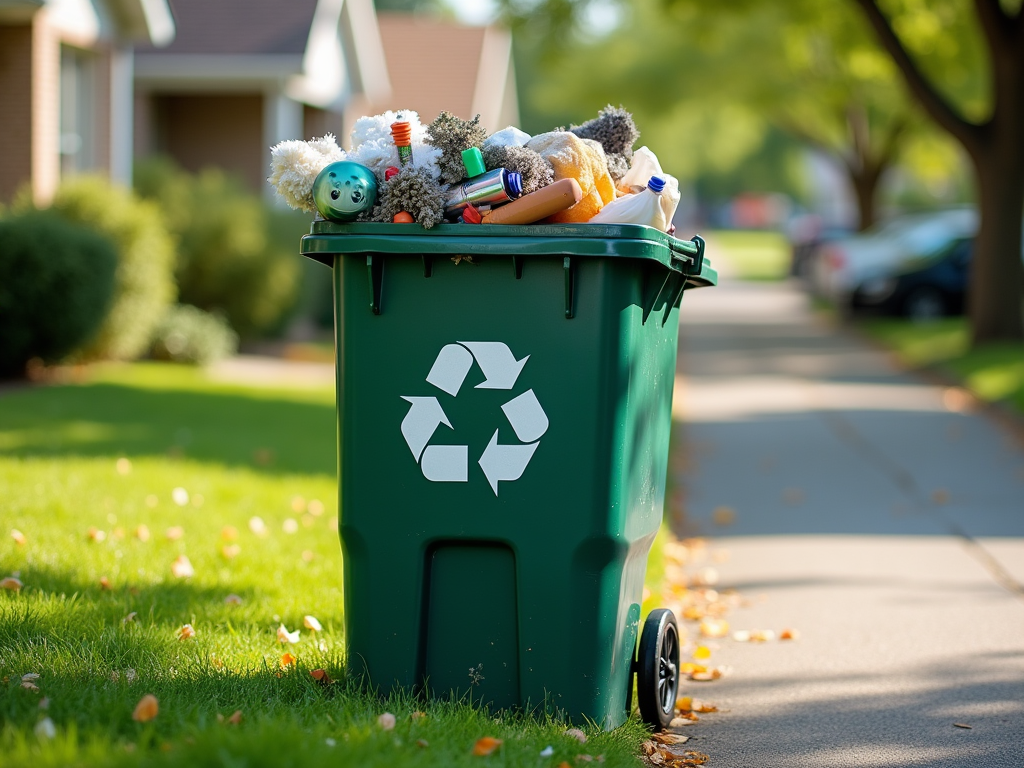Recycling has become a way of life for many, but there’s a major oversight that could be doing more harm than good, particularly to our oceans. The main mistake? Contaminating the recycling stream with non-recyclable waste. This simple error often leads to clean recyclables being sent to landfills or, worse, finding their way into our oceans. Understanding and addressing this mistake is crucial for the health of our planet.
Understanding the Impact of Contaminated Recycling

Contaminated recycling is one of the biggest impediments to successful recycling programs around the globe. When non-recyclable items, like plastic bags or food scraps, are tossed into recycling bins, they contaminate the materials that could otherwise be recycled. Contaminated batches are often too costly to sort, leading facilities to dispose of them entirely. This not only fills our landfills but can also result in waste entering the ocean through various waste streams.
The importance of reducing contamination can’t be stressed enough. Oceans suffer significantly because materials like plastics don’t degrade well in marine environments. Marine animals are susceptible to ingesting or becoming entangled in plastic waste, which can lead to severe injuries or death. Additionally, contaminated recycling results in lost opportunities to reuse valuable materials, increasing the demand for virgin resources and further environmental degradation.
To stop contaminating our recycling, it’s essential to know what shouldn’t go into the recycling bin. Some common non-recyclable items might surprise you. Plastic bags are a common culprit; while they seem recyclable, they should actually be disposed of at designated collection points. Styrofoam, a common takeout container material, is also largely non-recyclable, as is anything contaminated with food waste.
Here’s a basic list of common non-recyclables that often contaminate recycling streams:
- Plastic bags
- Styrofoam containers
- Greasy pizza boxes
- Used paper towels and napkins
- Electronic waste
Understanding these types of materials and ensuring they are disposed of correctly is a crucial first step in maintaining the integrity of recycling systems. Even small changes in consumer habits can lead to significant positive impacts on recycling efficiency and environmental health.
The Ripple Effect on Ocean Health

The mismanagement of recycling impacts our oceans in several ways, primarily through pollution and the destruction of marine ecosystems. As contaminated recyclables hit the landfills they leak, producing leachate—a toxic liquid that can reach waterways. This contributes to the microplastics crisis currently besieging our oceans, where tiny plastic particles infiltrate marine food chains, affecting wildlife and potentially entering the human diet by way of seafood consumption.
The ripple effect of ocean pollution is vast, contributing to issues like coral bleaching, the depletion of fish stocks, and negative impacts on coastal communities reliant on marine resources. Economically, the damage to fishing, tourism, and other marine-related industries can be profound, highlighting the need for systemic changes in how we manage waste and recycling processes.
Improving personal habits and understanding recycling systems better can tremendously impact environmental outcomes. Education is key, so take the time to learn the specifics of your local recycling program, which may differ significantly from one region to another. Many programs now offer resources or online guides to help residents discern what is and isn’t recyclable in their jurisdiction.
Individual actions play a significant role in recycling success. Consider reducing your overall waste footprint by opting for products with minimal packaging or those made from recycled materials. When disposing of waste, rinse food containers before recycling to prevent contamination. Community engagement is also vital; participate in or support local initiatives aimed at improving waste management and recycling awareness.
Conclusion
Recycling responsibly is more than just separating waste; it’s about maintaining clean streams that prevent environmental harm. The inadvertent contamination of recyclables is a significant issue leading waste into oceans where it causes far-reaching ecological damage. By understanding the common recycling mistakes and taking proactive steps to correct them, individuals can play a part in reversing the detrimental effects waste has on our oceans and planet.
Frequently Asked Questions
1. Why are plastic bags non-recyclable in most curbside programs?
Plastic bags often tangle in machinery at recycling facilities, creating costly jams. They usually require specialized recycling processes and should be returned to designated drop-off locations.
2. What should I do with Styrofoam, if it’s non-recyclable?
Styrofoam is difficult to recycle due to its composition. Check for local collection events or drop-off sites that accept Styrofoam, or try to reduce its use by opting for alternative materials.
3. How does recycling contaminate the ocean?
Contaminated recycling can be landfilled, where its failure to properly decompose contributes to pollution and leachate that eventually trickles into water systems and oceans.
4. Can food scraps go into the recycling bin?
No, food scraps are considered contaminants in recycling. They should be composted where possible, rather than mixed with recyclable materials.
5. How can I ensure I am recycling correctly?
Start by familiarizing yourself with local recycling guidelines, rinse containers before recycling, and avoid mixing non-recyclables with your regular recyclables. Confer with community resources for the best practices in your area.



